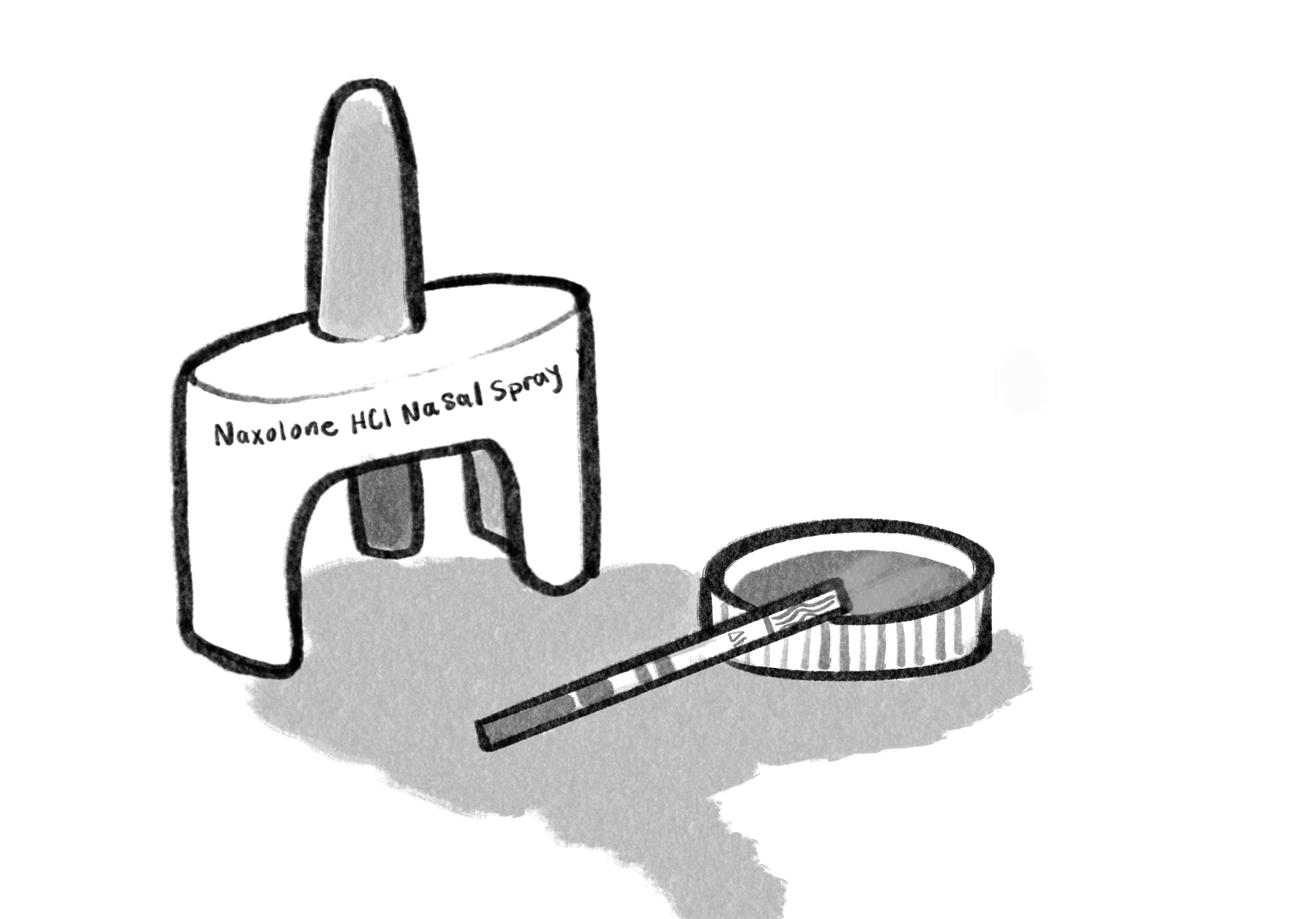Bowdoin needs harm reduction programs for drug use
October 28, 2022
 This
piece represents the opinion of the author
.
This
piece represents the opinion of the author
.
 Kyra Tan
Kyra TanA 2019 study found that 11.3 percent of people ages 18 to 25 have used cocaine at some point in their lifetime and 5.3 percent reported using cocaine within the past year. That same study found that 5.3 percent of people in this age group reported illicit opioid use within the past year. An informal study I conducted (by literally just interacting with people) found that most of the people I know have tried some kind of illicit drug in their time at Bowdoin.
Statistics for drug use on college campuses have a host of methodological limitations that should not be ignored. At the time of writing, I could not find any official statistics on drug use at Bowdoin. However, I implore you to think about statistics in your life at Bowdoin. Do you know a non-zero number of people that use illicit drugs or misuse prescription drugs? I do.
The purpose of this article is not to scare or convince anyone to not do drugs. Instead, I hope that by starting a conversation about drug use on campus, students will eventually gain access to harm reduction tools such as naloxone and fentanyl test strips. People experiment with drugs, and by not acknowledging that this experimentation happens on campus by promoting harm reduction programs, Bowdoin is doing a disservice to its students.
With any drug use, there is a risk of overdose. Overdose deaths are an epidemic that Bowdoin is not safe from. In 2021, Maine saw a 23 percent increase in overdose deaths, with 77 percent of those deaths due to fentanyl. Cumberland County reported 115 overdose deaths that same year. Between January and August of 2022, 6,355 nonfatal overdoses were reported in Maine; almost 22 percent of those overdoses were reported to be reversed by the use of naloxone.
Data supporting naloxone opioid overdose reversal is strong. Naloxone is an opioid antagonist, meaning that when it is administered, it binds opioid receptors to block the effects of opioids in the system. Fentanyl is an opioid which is often cut into drugs such as cocaine, ecstasy (MDMA) and marijuana to make them more profitable for suppliers. When used correctly and with proper precautions, naloxone is incredibly helpful for preventing overdose deaths. Additionally, naloxone is not harmful if given to a person who has not ingested opioids. Naloxone use is an evidence-based practice, so why doesn’t Bowdoin offer it to students and train them on how to use it?
Bowdoin is a great school filled with great students who sometimes experiment with drugs. We know this. However, while society has exited the age of “that doesn’t happen here,” Bowdoin is still caught in the murky waters of not acknowledging drug use on campus through harm reduction programs. Any non-zero number of students using drugs is reason enough to ensure that all students are trained on what to do in the case of an overdose and have access to naloxone. Students here do drugs, and pretending they don’t may eventually bring a preventable tragedy to campus.
Susu Gharib is a member of the Class of 2023.

Comments
Before submitting a comment, please review our comment policy. Some key points from the policy: